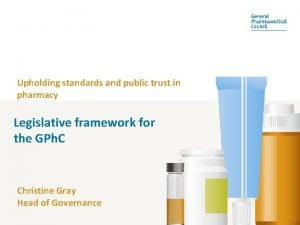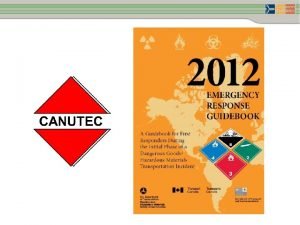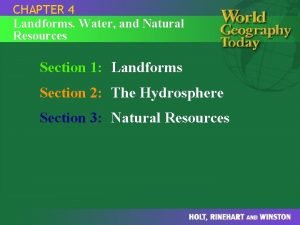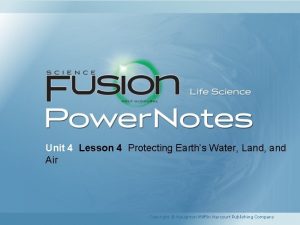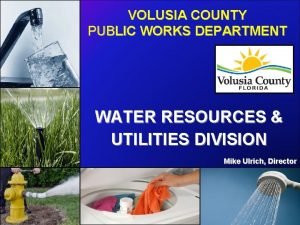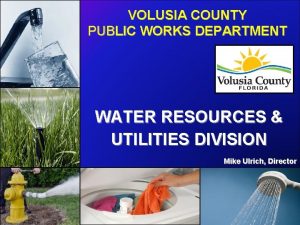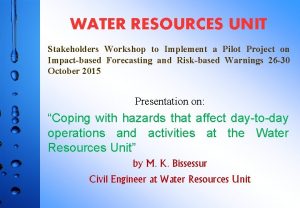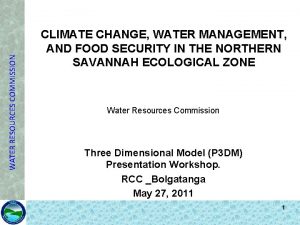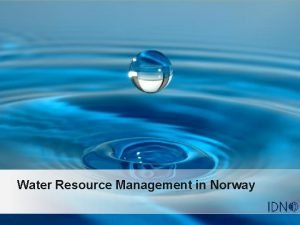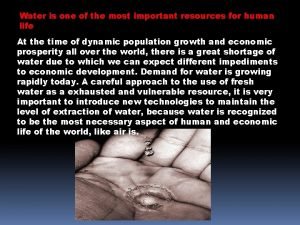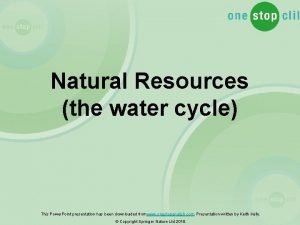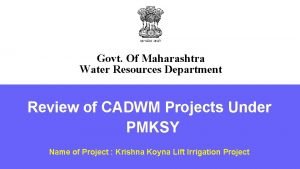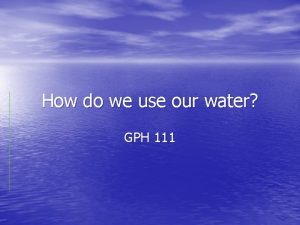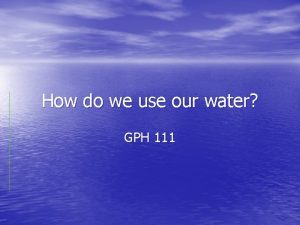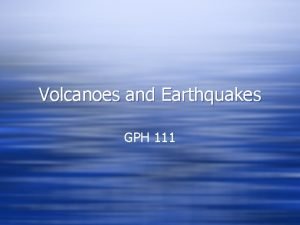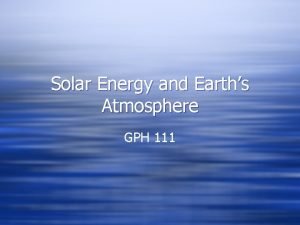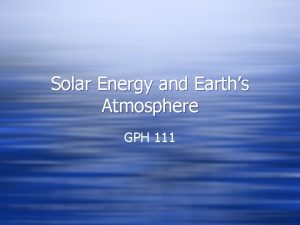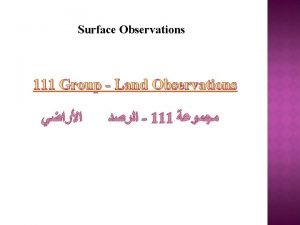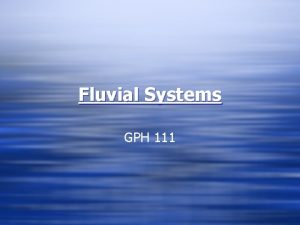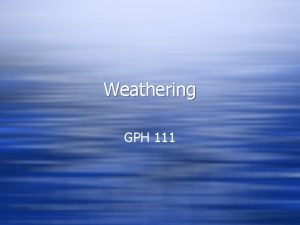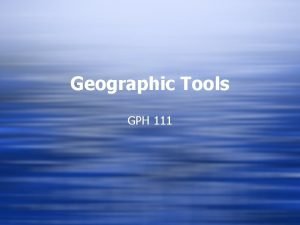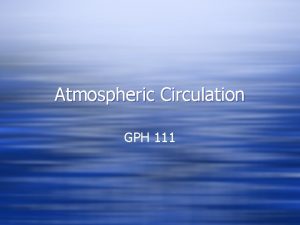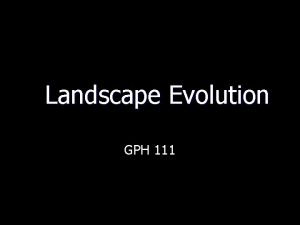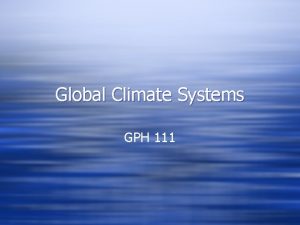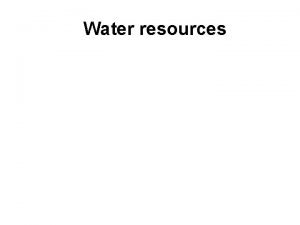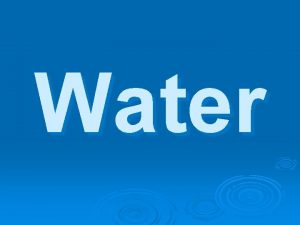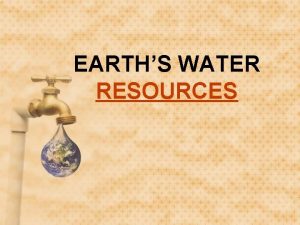Water Use and Resources in Arizona GPH 111























- Slides: 23

Water Use and Resources in Arizona GPH 111 – Role Playing Project

Water Project Game plan: • Where do we get our water from? • How do we use our water? • Interesting water use statistics • Long term problems with our water supply

Hydrologic Cycle

Hydrologic Cycle – Groundwater

Hydrologic Cycle - AZ Major Water Sheds – Mogollon Rim, Colorado Rockies, Wind River Mountains, and Utah Highlands Major Rivers – Colorado River, Salt River, and Verde River

Hydrologic Cycle - AZ Rocky Mountains Mogollon Rim Wind River Mountains Boulder Mountain

Central Arizona Project • Transports water from the Colorado River (Lake Havasu) to Maricopa, Pima, and Pinal Counties (Phoenix and Tucson) • Supplies up to 2. 8 million acre-feet of water deemed Arizona’s share from the Colorado River Compact [1 acre-foot equates to the amount of water needed for a family of five annually] • Lifts the water 2, 900 vertical feet along the way through 14 pumping stations • Run by 15 member elected board • 22, 500 gallons of water per second

Central Arizona Project

Central Arizona Project

Central Arizona Project

Central Arizona Project

Central Arizona Project

• Supplies water to Phoenix through canal locations used over 2, 000 years ago by the Hohokam people, largest in the world without surveying equipment • Two sides: 1) electricity operated by the state 2) a corporation that delivers over 1 million acre feet of water • SRP forged by early Phoenicians who pledged their homes and farms as collateral for a federal loan to construct Roosevelt Dam on the Salt River between 1906 – 1911 • Later placed more dams along the Salt (3) and along the Verde River (3) • Water from 13, 000 square mile watershed (Mogollon Rim) and from 250 pumping stations of groundwater • In normal years groundwater contributes roughly 25% of SRP’s water, dry years as much as 65%. Wells used to be drilled 500 feet deep, now 1, 200 feet. WHY BUILD DAMS? ? ? • Annual deficit of ~82 billion gallons Salt River Project

Salt River Project Roosevelt Dam on the Salt River!

Salt River Project Roosevelt Dam Construction on the Salt River!

Salt River Project Horse Mesa Dam on the Salt River!

Salt River Project Bartlett Dam on the Verde River for Irrigation Diversion!

Salt River Project Stewart Mountain Dam on the Salt River for Irrigation Diversion!

Salt River Project Drilling of an SRP well (250) that utilizes groundwater to augment surface flow water!

Total water brought to Phoenix, AZ • Called the “Phoenix Active Management Area” – controlled by the Arizona Department of Water Resources • Goal to achieve sustainable water resources by 2025 • 5, 646 square miles in area • Uses 2. 3 million acre feet annually • 1. 4 million acre-feet from renewable sources • 900, 000 acre-feet from groundwater • Overdraft of renewable sources of 251, 000 acrefeet (even though some excess CAP water in the winter is recharged back into the ground through infiltration fields [termed water banking] and through natural processes)

Water Banking Authority

Water Project Lab 1 • This is a homework assignment • Go to the following link: http: //watersim. asu. edu • Utilize the Water Sim model for the city of Phoenix to complete the lab and return to class in ONE week

Things to Know: • Basics of the Hydrologic Cycle • What are the major watersheds that supply water to Phoenix? Phoenix • Groundwater and surface flow from Colorado, Slat and Verde Rivers supply water to Phoenix • What are the two Agencies that supply water to Phoenix? Questions? Ask Dr. Douglass and see Chapter 6
 Water and water and water water
Water and water and water water Gph pharmacy
Gph pharmacy 011 101 001
011 101 001 Erg 2012
Erg 2012 What is the transformative process of operations management
What is the transformative process of operations management Fixed resources
Fixed resources Renewable resources vs nonrenewable resources
Renewable resources vs nonrenewable resources Natural resources from landforms
Natural resources from landforms Air and water resources lesson 4
Air and water resources lesson 4 Volusia county water department
Volusia county water department Volusia county water
Volusia county water Sweden and norway use equal quantities of resources
Sweden and norway use equal quantities of resources Water resources unit
Water resources unit Water management
Water management Norway water resources
Norway water resources Sabah water resources enactment 1998
Sabah water resources enactment 1998 Water management importance
Water management importance 14.2 uses of freshwater
14.2 uses of freshwater Pollution of water is responsible for
Pollution of water is responsible for Frontier 2030
Frontier 2030 Bangladesh is blessed with huge inland open water resources
Bangladesh is blessed with huge inland open water resources Water is one of the most important resource
Water is one of the most important resource Natural resources water cycle
Natural resources water cycle Maharashtra water resources department
Maharashtra water resources department

